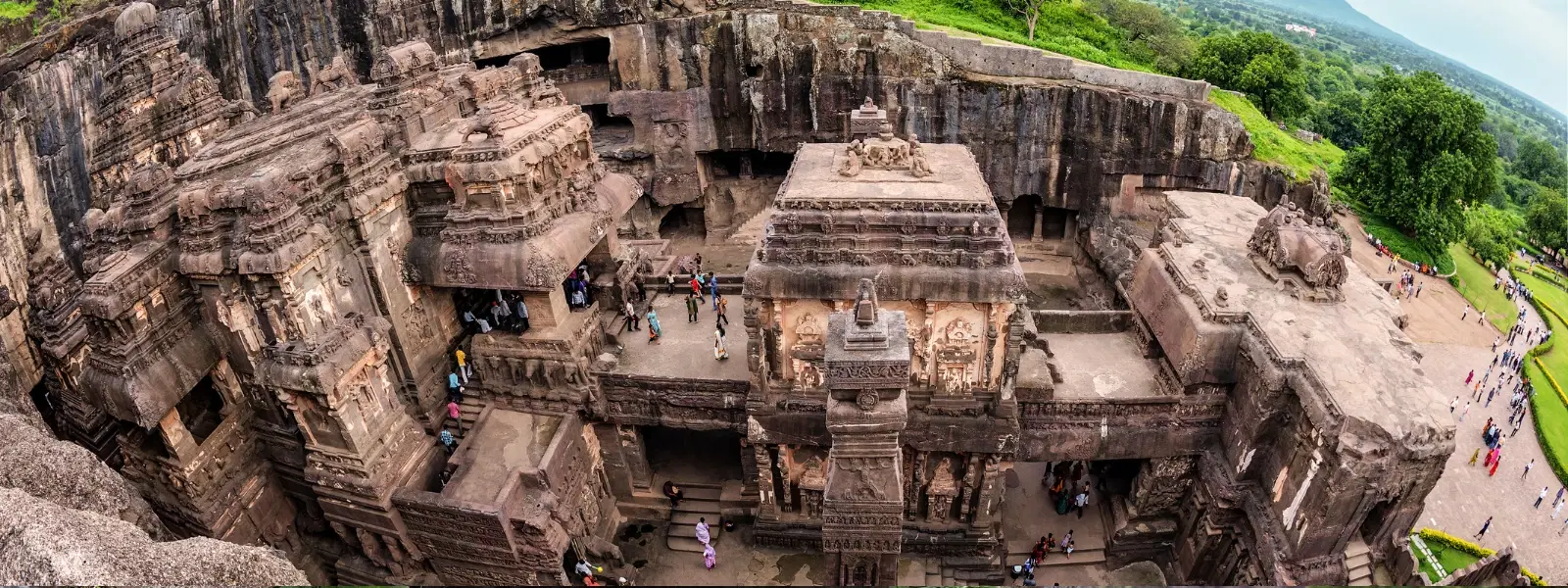
Hotels
•03 min read

Ancient India’s architectural marvels never cease to amaze, and few places reflect this magnificence as distinctly as the Undavalli Caves. Carved in solid rock by skilled artisans during the 4th-5th century CE, these rock-cut temples offer more than just a glimpse into the past—they embody a seamless blend of historical innovation and cultural synthesis. In this blog, we delve into 10 fascinating facts about Undavalli Caves rock-cut temple analysis, unpacking their architecture, storied history, and cultural significance.
The origins of the Undavalli Caves trace back to the 4th-5th century CE, at a time when art and architecture were undergoing tremendous evolution. Emerging during the same era that heralded the Gupta period's golden age, these caves were sculpted with impressive finesse that would come to define ancient rock-cut structures in India. The construction era is marked by innovative techniques that showcased both technical prowess and the ability to invoke deep spiritual resonance.
The caves are a testament to the rich tapestry of India's religious heritage. Initially serving as Buddhist viharas (monasteries), the site eventually transformed into an important Hindu temple complex. This religious transition not only highlights the evolving worship practices in the region but also stands as a symbol of India’s longstanding tradition of religious coexistence and harmony.
Undavalli Caves rock-cut temple analysis reveals a striking monolithic structure, carved directly into the rock with no use of bricks or mortar. The technique of rock-cut architecture allowed ancient builders to harness natural geological formations, turning raw stone into artistic masterpieces. Intricate carvings and detailed sculptures still captivate visitors, offering insights into the skill and patience of early Indian artisans.
The layout of the Undavalli Caves is as fascinating as it is complex. Upon entering, one is led through pillared halls that eventually reveal a sanctum sanctorum. Among its many wonders, the reclining Vishnu sculpture carved from a single block of granite stands out, emphasizing the grandeur and technical sophistication of these ancient structures.

Did You Know? The Undavalli Caves are an exceptional example of rock-cut architecture, with the reclining Vishnu sculpture being one of the largest monolithic statues in India.
In its early days, the Undavalli Caves bore strong Buddhist influences. They functioned as viharas where monks would gather for meditation and spiritual guidance. Architectural elements such as chaitya halls and stupas attest to this origin, reflecting the early Buddhist practices prevalent in the region. Such features continue to inform our understanding of ancient Indian cave temple analysis.
As time progressed, Undavalli Caves evolved to embrace Hindu traditions. This transformation saw the integration of elaborate sculptures and intricate carvings representing various Hindu deities. The artistic transition is significant in understanding the cultural dialogue between Buddhism and Hinduism, which remains a crucial element in India’s historical and religious narrative.
The artistry of the caves is immortalized in its detailed carvings. Depictions of gods, mythological figures, and floral motifs weave a visual narrative that celebrates both natural beauty and divine intervention. Ancient artisans employed innovative techniques to carve these intricate details right into the rock, leaving behind a legacy that continues to astound both art historians and casual visitors.
Among the many artistic highlights, the reclining Vishnu sculpture is perhaps the most celebrated. Its serene posture and majestic bearing offer a visual feast of religious symbolism. Comparatively, other rock-cut temple sculptures across India share similar features, yet the scale and detail found in the Undavalli Caves make them unique examples of ancient rock-cut structures and Undavalli Caves architecture.

Located near the vibrant city of Vijayawada, the Undavalli Caves are easily accessible by road. Visitors should note that the site is open during regular daylight hours, providing an ideal experience for those who wish to explore both the ancient artistry and the natural beauty of the surroundings. Nearby attractions also offer enriching cultural experiences, ensuring that your visit is both comprehensive and memorable.
The significance of preserving ancient rock-cut structures like the Undavalli Caves cannot be overstated. Government agencies and heritage organizations continuously work to maintain the integrity and beauty of these monuments. Ensuring the conservation of such sites not only protects India's cultural legacy but also supports a deeper connection with our past. []
The Undavalli Caves are renowned for their unique rock-cut architecture, multi-level design, and the impressive monolithic sculpture of Lord Vishnu in a reclining posture.
The primary deity associated with the Undavalli Caves is Lord Vishnu, depicted in a reclining posture, although early Buddhist influences are also evident.
The rock-cut cave temples, including the Undavalli Caves, were crafted by skilled artisans during the Gupta period with support from local rulers and dynasties.
The Undavalli Caves stand as a vibrant testament to India's rich heritage, merging historical significance with architectural brilliance. From its origins in the Gupta period to the evolving religious narratives, every carved detail reflects the ingenuity and artistry of ancient times. This exploration into the captivating world of rock-cut temple features invites every interested traveler to learn more about the profound legacy interwoven into these ancient halls of art and spirituality.